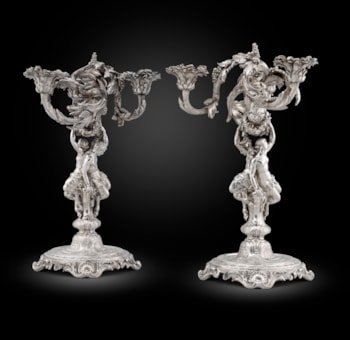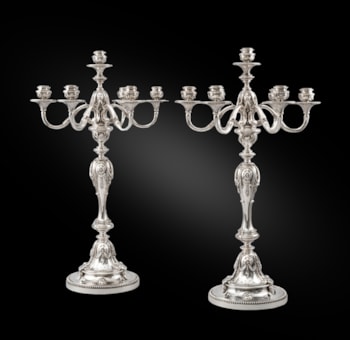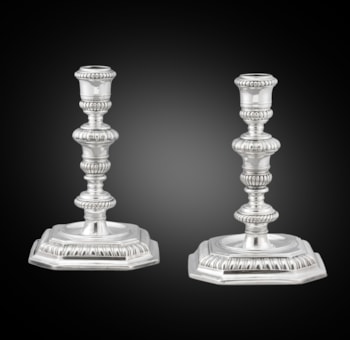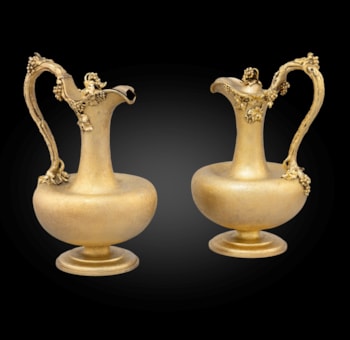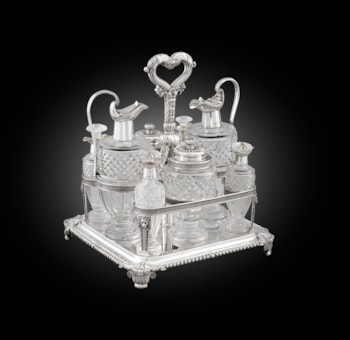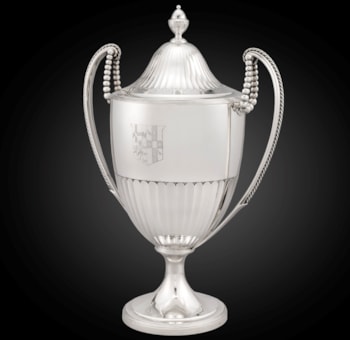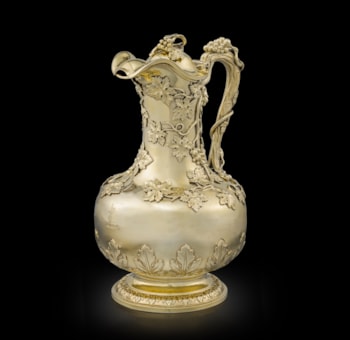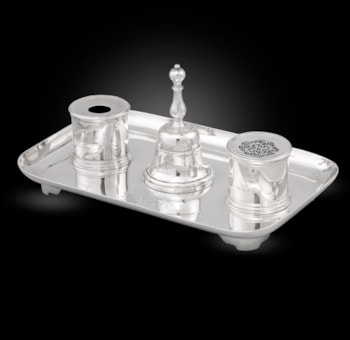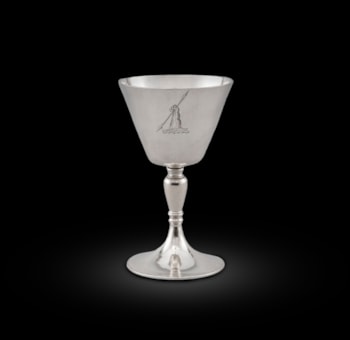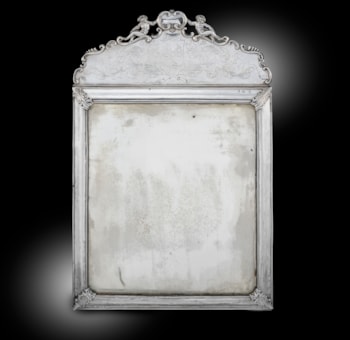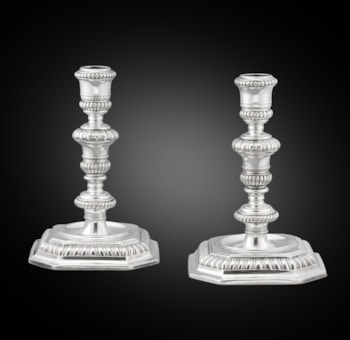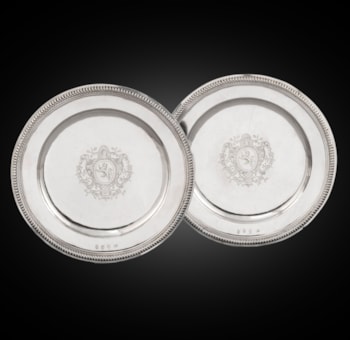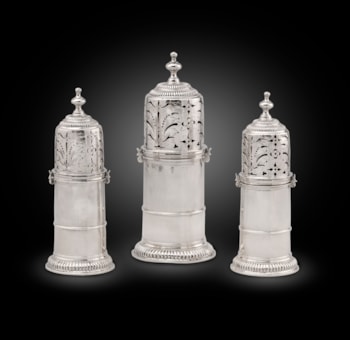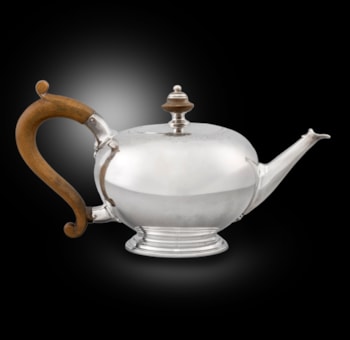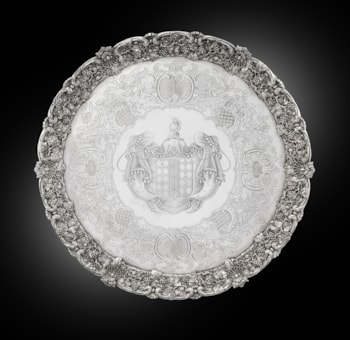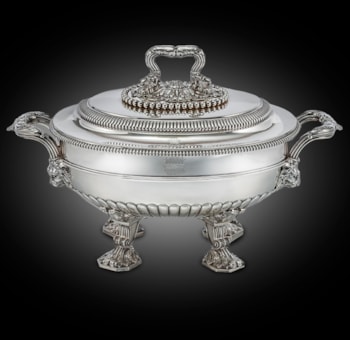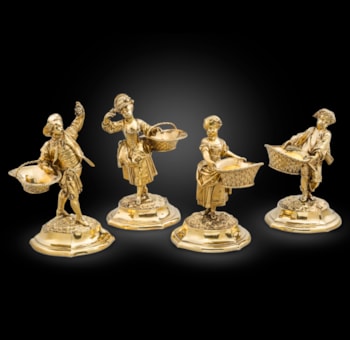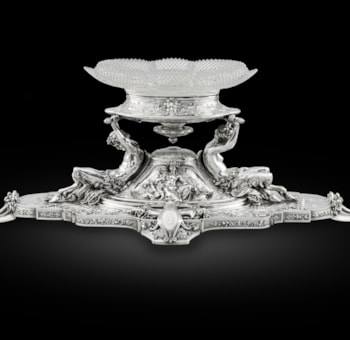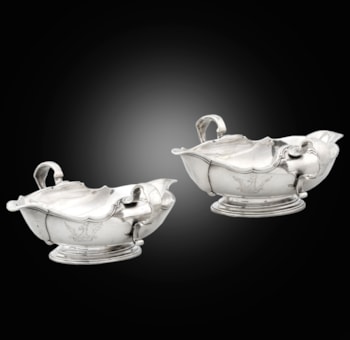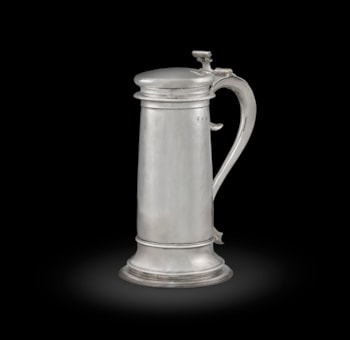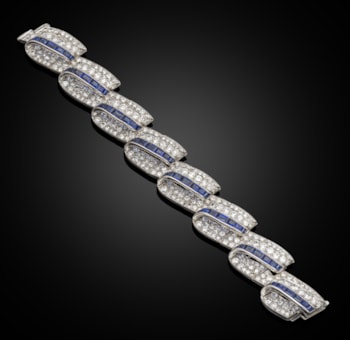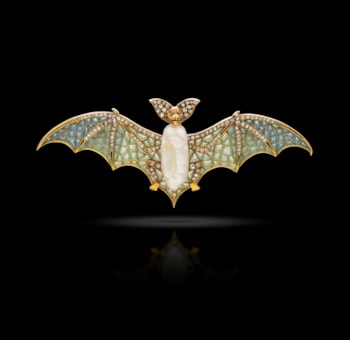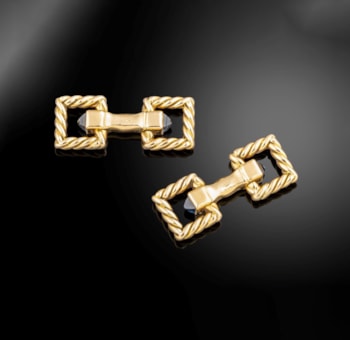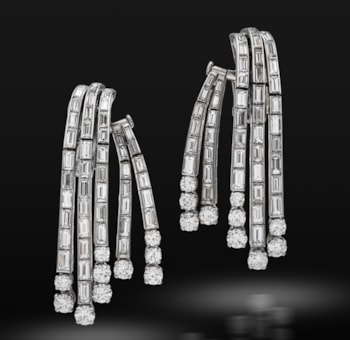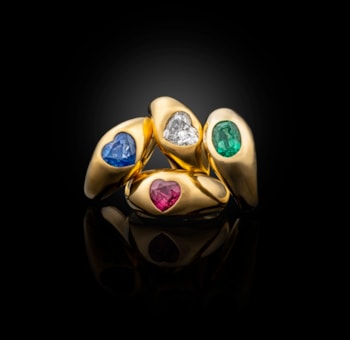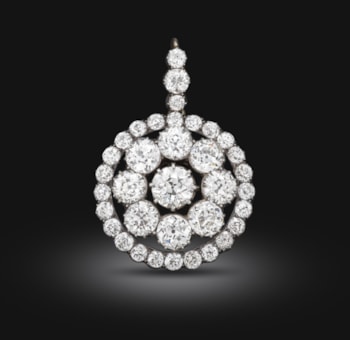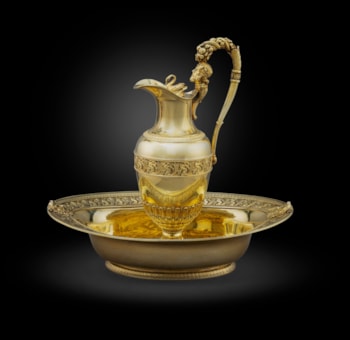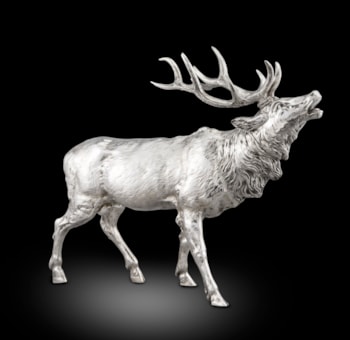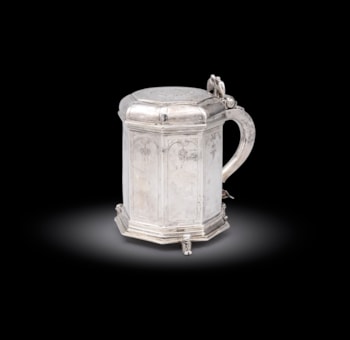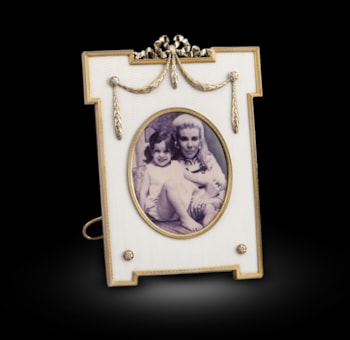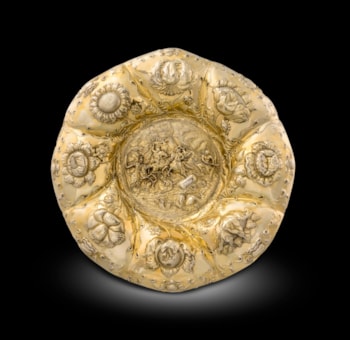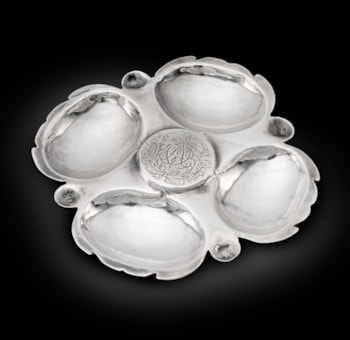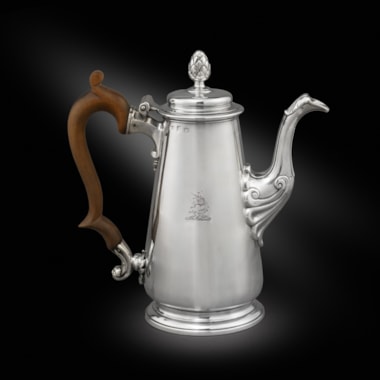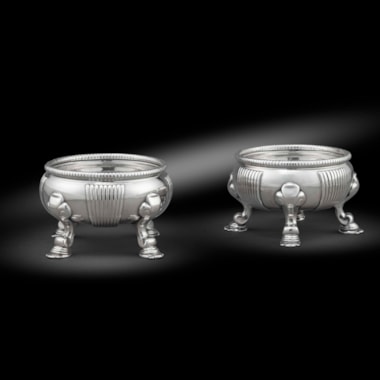The arms are those of Ellis impaling Stanhope for Welbore Ellis (1713-1802), born Kildare, Ireland, as the sixth and youngest but only surviving son of Dr. Welbore Ellis (1661/2-1734), bishop of Kildare and from 1732 of Meath, and his wife, Diana Briscoe (d. 1739), the daughter of Sir John Briscoe of Boughton, Northamptonshire, and Amberley Castle, Sussex. Ellis attended Westminster School and Christ Church Oxford, graduating 1736. He served as M.P. for Cricklade, then for Weymouth, as well as Spokesman for the Admiralty and Lord Chancellor of the Exchequer.
He married in 1747, Elizabeth Stanhope (d. 1761), the only daughter of Sir William Stanhope. The couple lived at Tylney Hall, Hampshire, and at Pope's Villa, Twickenham, which Elizabeth had acquired from her father. Their entertaining invited comment from their waspish neighbor Horace Walpole. Ellis was created 1st Baron Mendip in 1794, the title passing to his great-nephew and heir, Henry Welbore Agar, second Viscount Clifden, who assumed the surname, Ellis.
Welbore Ellis (1713-1802) to his great nephew
Henry Welbore Agar, 2nd Viscount Clifden (1761-7836) and by descent to
Henry Agar-Ellis, 4th Viscount Clifden (1863-1895) perhaps sold privately
George Dunton Widener (1861-1912) and by descent to his son (dishes no.14 and 15)
George Dunton Widener Jr. (1889-1971) (14 and 15)
Christie's New York, 29 April 1986, lot 175 (14 and 15)
Sotheby's London, 5 March 1998, lot 238 (14 and 15)
F. Gorevic & Son, Inc., New York (13)
Bonham's, London, 30 June 2010, lot 89 (13)
Paul de Lamerie arrived in England with his Huguenot parents in or before 1689, having been baptized at 's Hertogenbosch in the Netherlands in 1688. In 1703 he was apprenticed to the Huguenot goldsmith Pierre Platel, and after being admitted to the freedom of the Goldsmiths' Company, he registered his first mark and set up a workshop in Windmill Street, Soho, in 1712. He took thirteen apprentices between 1715 and 1749 who paid premiums varying between £10 and £45m In 1716 he married Louisa Juliott, also a Huguenot, and by her had six children, three of whom died in childhood. Little more of his personal history is known, although his career in the Goldsmiths' Company is comparatively well documented. By 1717, he was already referred to as 'the King's Silversmith' but again in a complaint 'for making and selling Great quantities of Large Plate which he doth not bring to Goldsmith's Hall to be mark't according to Law.' He joined the livery in 1717; fourteen years later he was elected to the court of assistants. In 1743 he was appointed fourth warden and in 1747 second warden; that he never became prime warden probably due to ill health. From the outset he had wealthy clients such as the Honourable George Treby and the Duke of Sutherland. Among his more important later patrons were Sir Robert Walpole, Baron Anson, and the fifth Earl of Mountrath. A gradual expansion of his business culminated in his move in 1739 to considerably larger premises in Gerrard street. His pre-eminent position in the trade is signified by the commission he received in 1740 from the Goldsmiths' Company to provide two of their most splendid pieces of ceremonial display plate, a silver-gilt inkstand and the famous rococo ewer and dish.
You May Also Like






